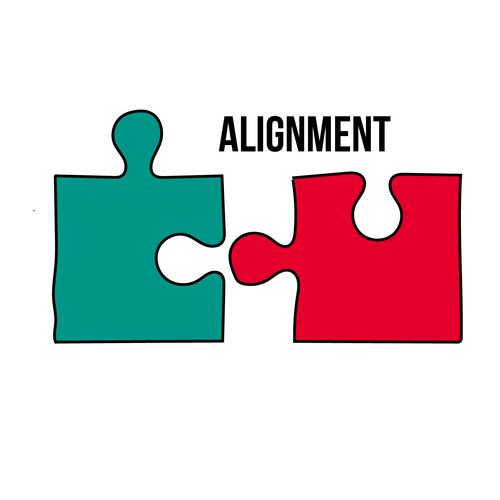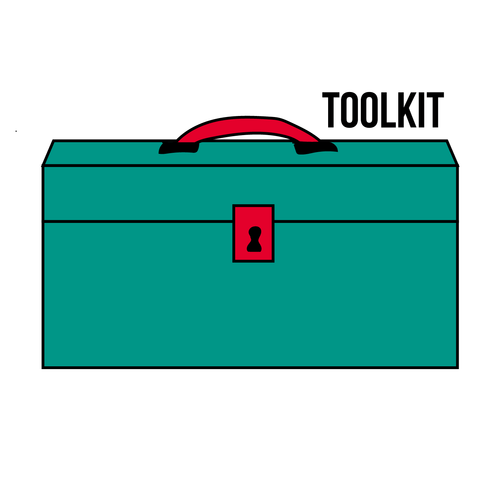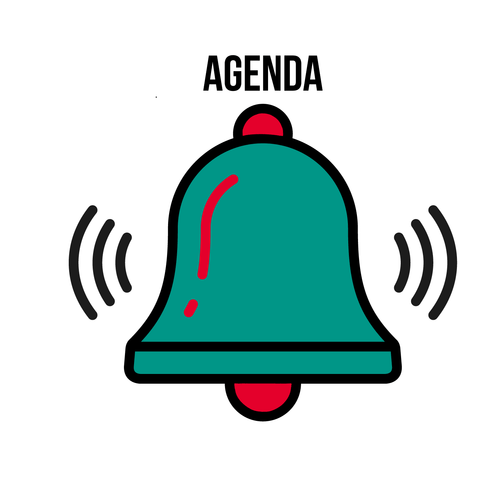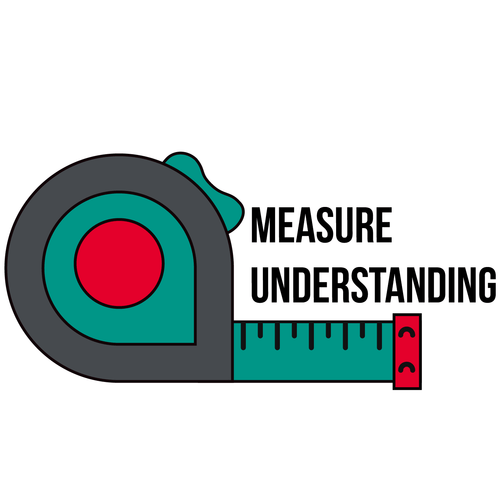6.8: The Chickasaw Nation: Mealtime Blessings
- Page ID
- 14096
\( \newcommand{\vecs}[1]{\overset { \scriptstyle \rightharpoonup} {\mathbf{#1}} } \)
\( \newcommand{\vecd}[1]{\overset{-\!-\!\rightharpoonup}{\vphantom{a}\smash {#1}}} \)
\( \newcommand{\id}{\mathrm{id}}\) \( \newcommand{\Span}{\mathrm{span}}\)
( \newcommand{\kernel}{\mathrm{null}\,}\) \( \newcommand{\range}{\mathrm{range}\,}\)
\( \newcommand{\RealPart}{\mathrm{Re}}\) \( \newcommand{\ImaginaryPart}{\mathrm{Im}}\)
\( \newcommand{\Argument}{\mathrm{Arg}}\) \( \newcommand{\norm}[1]{\| #1 \|}\)
\( \newcommand{\inner}[2]{\langle #1, #2 \rangle}\)
\( \newcommand{\Span}{\mathrm{span}}\)
\( \newcommand{\id}{\mathrm{id}}\)
\( \newcommand{\Span}{\mathrm{span}}\)
\( \newcommand{\kernel}{\mathrm{null}\,}\)
\( \newcommand{\range}{\mathrm{range}\,}\)
\( \newcommand{\RealPart}{\mathrm{Re}}\)
\( \newcommand{\ImaginaryPart}{\mathrm{Im}}\)
\( \newcommand{\Argument}{\mathrm{Arg}}\)
\( \newcommand{\norm}[1]{\| #1 \|}\)
\( \newcommand{\inner}[2]{\langle #1, #2 \rangle}\)
\( \newcommand{\Span}{\mathrm{span}}\) \( \newcommand{\AA}{\unicode[.8,0]{x212B}}\)
\( \newcommand{\vectorA}[1]{\vec{#1}} % arrow\)
\( \newcommand{\vectorAt}[1]{\vec{\text{#1}}} % arrow\)
\( \newcommand{\vectorB}[1]{\overset { \scriptstyle \rightharpoonup} {\mathbf{#1}} } \)
\( \newcommand{\vectorC}[1]{\textbf{#1}} \)
\( \newcommand{\vectorD}[1]{\overrightarrow{#1}} \)
\( \newcommand{\vectorDt}[1]{\overrightarrow{\text{#1}}} \)
\( \newcommand{\vectE}[1]{\overset{-\!-\!\rightharpoonup}{\vphantom{a}\smash{\mathbf {#1}}}} \)
\( \newcommand{\vecs}[1]{\overset { \scriptstyle \rightharpoonup} {\mathbf{#1}} } \)
\( \newcommand{\vecd}[1]{\overset{-\!-\!\rightharpoonup}{\vphantom{a}\smash {#1}}} \)
\(\newcommand{\avec}{\mathbf a}\) \(\newcommand{\bvec}{\mathbf b}\) \(\newcommand{\cvec}{\mathbf c}\) \(\newcommand{\dvec}{\mathbf d}\) \(\newcommand{\dtil}{\widetilde{\mathbf d}}\) \(\newcommand{\evec}{\mathbf e}\) \(\newcommand{\fvec}{\mathbf f}\) \(\newcommand{\nvec}{\mathbf n}\) \(\newcommand{\pvec}{\mathbf p}\) \(\newcommand{\qvec}{\mathbf q}\) \(\newcommand{\svec}{\mathbf s}\) \(\newcommand{\tvec}{\mathbf t}\) \(\newcommand{\uvec}{\mathbf u}\) \(\newcommand{\vvec}{\mathbf v}\) \(\newcommand{\wvec}{\mathbf w}\) \(\newcommand{\xvec}{\mathbf x}\) \(\newcommand{\yvec}{\mathbf y}\) \(\newcommand{\zvec}{\mathbf z}\) \(\newcommand{\rvec}{\mathbf r}\) \(\newcommand{\mvec}{\mathbf m}\) \(\newcommand{\zerovec}{\mathbf 0}\) \(\newcommand{\onevec}{\mathbf 1}\) \(\newcommand{\real}{\mathbb R}\) \(\newcommand{\twovec}[2]{\left[\begin{array}{r}#1 \\ #2 \end{array}\right]}\) \(\newcommand{\ctwovec}[2]{\left[\begin{array}{c}#1 \\ #2 \end{array}\right]}\) \(\newcommand{\threevec}[3]{\left[\begin{array}{r}#1 \\ #2 \\ #3 \end{array}\right]}\) \(\newcommand{\cthreevec}[3]{\left[\begin{array}{c}#1 \\ #2 \\ #3 \end{array}\right]}\) \(\newcommand{\fourvec}[4]{\left[\begin{array}{r}#1 \\ #2 \\ #3 \\ #4 \end{array}\right]}\) \(\newcommand{\cfourvec}[4]{\left[\begin{array}{c}#1 \\ #2 \\ #3 \\ #4 \end{array}\right]}\) \(\newcommand{\fivevec}[5]{\left[\begin{array}{r}#1 \\ #2 \\ #3 \\ #4 \\ #5 \\ \end{array}\right]}\) \(\newcommand{\cfivevec}[5]{\left[\begin{array}{c}#1 \\ #2 \\ #3 \\ #4 \\ #5 \\ \end{array}\right]}\) \(\newcommand{\mattwo}[4]{\left[\begin{array}{rr}#1 \amp #2 \\ #3 \amp #4 \\ \end{array}\right]}\) \(\newcommand{\laspan}[1]{\text{Span}\{#1\}}\) \(\newcommand{\bcal}{\cal B}\) \(\newcommand{\ccal}{\cal C}\) \(\newcommand{\scal}{\cal S}\) \(\newcommand{\wcal}{\cal W}\) \(\newcommand{\ecal}{\cal E}\) \(\newcommand{\coords}[2]{\left\{#1\right\}_{#2}}\) \(\newcommand{\gray}[1]{\color{gray}{#1}}\) \(\newcommand{\lgray}[1]{\color{lightgray}{#1}}\) \(\newcommand{\rank}{\operatorname{rank}}\) \(\newcommand{\row}{\text{Row}}\) \(\newcommand{\col}{\text{Col}}\) \(\renewcommand{\row}{\text{Row}}\) \(\newcommand{\nul}{\text{Nul}}\) \(\newcommand{\var}{\text{Var}}\) \(\newcommand{\corr}{\text{corr}}\) \(\newcommand{\len}[1]{\left|#1\right|}\) \(\newcommand{\bbar}{\overline{\bvec}}\) \(\newcommand{\bhat}{\widehat{\bvec}}\) \(\newcommand{\bperp}{\bvec^\perp}\) \(\newcommand{\xhat}{\widehat{\xvec}}\) \(\newcommand{\vhat}{\widehat{\vvec}}\) \(\newcommand{\uhat}{\widehat{\uvec}}\) \(\newcommand{\what}{\widehat{\wvec}}\) \(\newcommand{\Sighat}{\widehat{\Sigma}}\) \(\newcommand{\lt}{<}\) \(\newcommand{\gt}{>}\) \(\newcommand{\amp}{&}\) \(\definecolor{fillinmathshade}{gray}{0.9}\)
National Health Education Standards (NHES)
- 8.8.2 Demonstrate how to influence and support others to make positive health choices
- 8.12.3 Work cooperatively as an advocate for improving personal, family, and community health.
Wellness Guidelines
- Increase conflict resolution skills
- Decrease negative perception of challenges

- Instruction: In a group or think-pair-share format, have participants discuss the following questions. Acknowledge those who have progressed toward their goal(s) and encourage anyone who wants to change or modify their goal to get 1:1 support.
- Share: Let’s discuss our SMART Goals.
- How is it going with your current SMART goal?
- What are some ways you can improve progress towards your goal? (Grows)
- What are some ways you are doing well with progress towards your goal? (Glows)
GUIDELINE: Increase conflict resolution skills and decrease negative perception of challenges.
- Share: What guideline do you think is related to today’s lesson? Who has a SMART Goal related to this guideline?
- Instruction: Select one activity.
- Guideline Popcorn: The group lists all 8 guidelines rapidly in popcorn format.
- Guideline Charades: Divide participants into groups and assign each a guideline. Each group has to silently act out the guideline for the rest to guess.
- Two Truths and One Lie:
- Truth 1: Family mealtimes create opportunities to spend time together, communicate and listen to each other, share ideas, and problem solve [American College of Pediatricians, 2014].
- Truth 2: Family mealtimes improve relationships between families.
- Lie: Family talks or conversations only happen during storybook reading, game nights, or car rides.
- Share: Family talks or conversations can happen anytime, but studies have shown an increase talks or conversations happen more during family mealtimes [American College of Pediatricians, 2014].
- Questions to discuss and/or journal:
- How many times a week do you eat with your family/friends? Why or why not?
- When you eat with your friends/family do you talk to them? Why or why not?
- How do you usually try to make yourself less angry?

- How to have engaging conversations during mealtime and how engaging conversations during mealtimes helps build your support network.

- Worksheets
- Slide presentation
- The Chickasaw Foundation: Conversation Starters
- Post-its or scrap paper
- Snacks (vegetables, fruits, yogurt, pretzels, etc.)
- Drinks (water, 100% juice, unsweetened tea, low-fat or fat-free milk, etc.)


- Do Now
- Who’s having Family Meals? Activity
- Parent Communication Activity
- Create The Conversation Activity
- Exit Ticket
Activities
Do Now:
- Instruction:
- Ask participants to write down as many words they can think of to describe family mealtime in 1-2 minutes.
- OPTIONAL: consider having a small prize (a stress ball or small food item) for the student who comes up with the most words.
- After 1-2 minutes have passed, ask all participants to finish writing and stand up.
- Ask participants to sit down if they have 3 or fewer words on their paper, 5 or less, 6 or less, 7 or less, 8 or less, continue on until there are only one or two participants standing; give the small prize.
- Have participants sit down after completing the activity.
- As participants share answers to the following questions, record on board, projector or flipchart paper.
- What words did you write down?
- As participants share answers to the following questions, record on board, projector or flipchart paper.
- Share:
- Today we are going to be discussing family mealtime, and the thoughts and feelings we have towards family meals, just like you started to express in the Do Now.
Good to Know: Who’s Having Family Meals?
- Share:
- When families are eating meals together, many are eating them with phones at the table or in front of the TV preventing meaningful conversations with those around them.
- Additionally, some students regularly eat in a different room than their family members, even if there are family members home.
- Ask participants: “Has anyone here ever done that?”
- If you are someone who eats in a different room from your family or household, you are NOT alone. 23% of high school students reported never having a single-family meal in a week; that’s about 1 in 4 students [Chickasaw Nation, Horton & Lovo, 2018].
- Instruction:
- Have participants answer the following questions on their worksheet or by sharing out loud:
- When is the last time you had an electronic-free mealtime?
- How many meals do you eat with your family in a typical week?
- Less than 1
- 2-4 meals
- 5-6 meals
- 7 or more meals
- Have participants answer the following questions on their worksheet or by sharing out loud:
- Instruction:
- Ask participants to raise their hands to the question:
- Who here has had an electronic-free mealtime in the past week?”
- Ask if any participants would like to volunteer to share a recent electronic-free mealtime experience.
- Ask participants:
- Can you help me come up with a list of people we can have a mealtime with besides our family?
- Allow participants to respond and make a list on the board.
- Ask participants to raise their hands to the question:
Real World Relevance: Parent Communication
- Instruction:
- Ask participants to answer the following two questions on a post-it note or scrap paper. Inform them that these answers are for their knowledge and eyes only and won’t be collected today; they can choose to place them in the trash on their way out.
- Would you like more communication with your parents?
- Do you think family mealtime would be a place to have more communication with your parents?
- Ask participants to answer the following two questions on a post-it note or scrap paper. Inform them that these answers are for their knowledge and eyes only and won’t be collected today; they can choose to place them in the trash on their way out.
- Share:
- You’re not alone, HealthCorps coordinators asked students like you and here are the results:
- 64% of students reported wanting more communication with their families.
- 67% of students thought they could increase family communication by having meals together [HealthCorps Family Communication Poll, 2016].
- Play the video: https://www.youtube.com/watch?v=P9ZMZBSa9q8
- You’re not alone, HealthCorps coordinators asked students like you and here are the results:
- Instruction:
- Have participants answer the following question on their worksheet or by sharing out loud.
- What surprised you about that video?
- Answers may include:
- That a parent didn’t think their kids would choose them to have dinner with OR that all the kids said their parents.
- Have participants answer the following question on their worksheet or by sharing out loud.
- Share:
- Today we are going to have a mealtime together.
- Family mealtimes offer the opportunity to spend time together, reconnect after a long day, communicate with and listen to each other, share values and ideas and problem solve [American College of Pediatricians, 2014].
- An important part of the mealtime we are talking about today is having an electronic-free mealtime, so I am going to ask you to make sure your electronics are put away.
- We’ve learned already that youth, like you, want more communication with their parents and think mealtime would be a place to do that; however, we saw in the video that parents are surprised their children would want to eat with them. (If students did not watch the video, let them know that, when surveyed, parents don’t always identify family meals as a place to increase communication [Chickasaw Nation, Horton & Lovo, 2018].
- Sometimes, when having an electronic-free mealtime with family, friends, or the other individuals you mentioned earlier, it can be hard to know how to start meaningful conversations.
- The next activity should help you feel more comfortable in encouraging electronic-free mealtimes and a space to reconnect with your peers.
Hands-On: Create the Conversation Activity
- Set Up:
- Have participants move tables and chairs together to create a family table. Recommend groups of four (4) to six (6).
- Each group should choose 2-3 conversation starters from the Chickasaw Foundation materials.
- The facilitator can determine the number of prompts used depending on time available.
- Optional: Provide the whole stack of conversation starters to your participants to use during the activity and take home after the lesson.
- Distribute bowls of snacks (vegetables, fruits, yogurt, pretzels, etc.) and drinks (water, 100% juice, unsweetened tea, low-fat or fat-free milk, etc.).
- Instruction:
- Have participants and facilitator sit down in their groups to share a mealtime conversation.
- Have each group select a conversation starter to share with each other. If time permits, groups can choose a second conversation starter.
- Participants will take turns sharing answers to their selected conversation starter.
- NOTE: this does not need to be done in an orderly fashion, as long as members are being respectful of the speaker. It is also ok for people to comment on another’s answer, as we are trying to create a natural conversation.
- Once everyone has had a chance to comment on their selected conversation starter(s), stop the conversations and say, “Now we are going to talk about what we just experienced”.
- Have participants answer the following questions on their worksheet or by sharing out loud:
- What are some words you would use to describe today’s mealtime?
- Did you learn something about your peers you maybe didn’t know before sitting down together?
- Did you feel like your opinions were being heard and valued?

Exit Ticket:
- Instruction:
- Have participants write on their worksheet answers to the following questions:
- Who could you have an electronic-free meal with this week?
- Choose one or two conversation starters that you will use, feel free to create your own.
- Have a handout or stack of conversation starters for students to take home to use at their next electronic-free mealtime.
- Follow-up with the students in a week about how that mealtime went.
- Have participants write on their worksheet answers to the following questions:
Special thank you to our partners at The Chickasaw Nation for supporting the content of this lesson:
Mealtime Blessings, an initiative of Chickasaw Nation Department of Health, encourages families to make the most of family and mealtime by enjoying meals together. For more information in regard to Mealtime Blessings please go to https://www.chickasaw.net/Services/Mealtime-Blessings.aspx.
Bibliography
- American College of Pediatricians. (2014). The Benefits of the Family Table. Retrieved from: www.acpeds.org/the-college-speaks/position-statements/parenting-issues/the-benefits-of-the-family-table
- Center on Addiction. (2010). The Importance of Family Dinners. Retrieved from: https://www.centeronaddiction.org/ad...y-dinners-2010
- Chickasaw Nation, Horton, K. & Loyo, J. (2018). Chickasaw National Mealtime Blessings Campaign 2018 Evaluation Report, December 2016- February 2018.
- Family & Children’s Center. (2014). The Importance of Family Mealtime. Retrieved from: https://www.fcconline.org/the-importance-of-family-mealtime/
- (2016). HealthCorps Family Communication Poll. May 2016.
- North Dakota State University. (2009).The Big Benefits of Family Meals. Retrieved from: https://www.ag.ndsu.edu/food/health-...zine/test-item
- Sanford Children’s Health. (n.d.). Why the Family Meal is Important. Retrieved from: https://www.stanfordchildrens.org/en/topic/default?id=why-the-family-meal-is-important-1-701
- The Cleveland Clinic. (2016). Why You Should Make Family Mealtime a Priority. Retrieved from: https://health.clevelandclinic.org/m...time-priority/
- The Conversation. (2015). Science says: Eat with your kids. Retrieved from: http://theconversation.com/science-says-eat-with-your-kids-34573
- The Family Dinner Project. (n.d.). Benefits of Family Dinners. Retrieved from: https://thefamilydinnerproject.org/a...amily-dinners/

Facilitator Notes:
- Share:
- Over the past three decades family time at the dinner table and conversation has declined more than 30% due to distractions such as television watching, text messaging and smartphone apps [American college Pediatricians, 2014].
- Family mealtime helps provide a regular and consistent opportunity to create an experience that is meaningful and offers a sense of belonging [The Big Benefits of Family Meals, 2009].
- A family table is a place where children and adolescents can observe their parents interact, negotiate, solve problems, express emotions and treat one another with respect.
- Here are some benefits affiliated with family meals.
- Academic
- Teens who have dinner with their families seven times a week are almost 40% likelier to receive A’s and B’s in school compared to teens who have dinner with their families two or fewer times a week.
- Language development increases by expanding vocabularies and learning to hear discussions that have narratives and explanations.
[American College of Pediatricians, 2014]
- Nutrition
- Adolescents that eat with the family eat more vegetables, fruits, and dairy products.
- Children ages 9-14 are 35% less likely to engage in eating disorders when eating with families compared to those who do not eat together
- Pre-school aged children that eat with the families had a 40% lower prevalence of obesity
- Limited Television Viewing
- Teens having fewer family dinners report more TV watching.
- Decreased Drug and Alcohol Use
- A study by CASAColumbia reported teens that had fewer family meals were twice as likely to have used tobacco, almost twice as likely to have used alcohol and 1.5 times likelier to use marijuana [Center on Addiction, 2010].
- Improved Family Relationships
- Teens having more family meals are more likely to report having excellent relationships with their family; twice as likely to report having an excellent relationship with father and siblings.
- Less Emotional Stress
- A study of Canadian teens between 11 and 15 years of age showed:
- Teens with more frequent family meals had fewer emotional and behavioral problems.
- Teens were more honest and had more helpful behaviors towards others compared to teens who did not have frequent family meals. [American College of Pediatrics, 2014]
- A study of Canadian teens between 11 and 15 years of age showed:
- Academic
- Instruction: In a group or think-pair-share format, have participants discuss the following questions. Acknowledge those who have progressed toward their goal(s) and encourage anyone who wants to change or modify their goal to get 1:1 support.
- Share: Let’s discuss our SMART Goals.
- How is it going with your current SMART goal?
- What are some ways you can improve progress towards your goal? (Grows)
- What are some ways you are doing well with progress towards your goal? (Glows)
Special thank you to our partners at The Chickasaw Nation for supporting the content of this lesson:
Mealtime Blessings, an initiative of Chickasaw Nation Department of Health, encourages families to make the most of family and mealtime by enjoying meals together. For more information in regard to Mealtime Blessings please go to https://www.chickasaw.net/Services/Mealtime-Blessings.aspx.
Bibliography
- American College of Pediatricians. (2014). The Benefits of the Family Table. Retrieved from: www.acpeds.org/the-college-speaks/position-statements/parenting-issues/the-benefits-of-the-family-table
- Center on Addiction. (2010). The Importance of Family Dinners. Retrieved from: https://www.centeronaddiction.org/ad...y-dinners-2010
- Chickasaw Nation, Horton, K. & Loyo, J. (2018). Chickasaw National Mealtime Blessings Campaign 2018 Evaluation Report, December 2016- February 2018.
- Family & Children’s Center. (2014). The Importance of Family Mealtime. Retrieved from: https://www.fcconline.org/the-importance-of-family-mealtime/
- (2016). HealthCorps Family Communication Poll. May 2016.
- North Dakota State University. (2009).The Big Benefits of Family Meals. Retrieved from: https://www.ag.ndsu.edu/food/health-...zine/test-item
- Sanford Children’s Health. (n.d.). Why the Family Meal is Important. Retrieved from: https://www.stanfordchildrens.org/en/topic/default?id=why-the-family-meal-is-important-1-701
- The Cleveland Clinic. (2016). Why You Should Make Family Mealtime a Priority. Retrieved from: https://health.clevelandclinic.org/m...time-priority/
- The Conversation. (2015). Science says: Eat with your kids. Retrieved from: http://theconversation.com/science-says-eat-with-your-kids-34573
- The Family Dinner Project. (n.d.). Benefits of Family Dinners. Retrieved from: https://thefamilydinnerproject.org/a...amily-dinners/
Resources
Facilitator Notes:
- Share:
- Over the past three decades family time at the dinner table and conversation has declined more than 30% due to distractions such as television watching, text messaging and smartphone apps [American college Pediatricians, 2014].
- Family mealtime helps provide a regular and consistent opportunity to create an experience that is meaningful and offers a sense of belonging [The Big Benefits of Family Meals, 2009].
- A family table is a place where children and adolescents can observe their parents interact, negotiate, solve problems, express emotions and treat one another with respect.
- Here are some benefits affiliated with family meals.
- Academic
- Teens who have dinner with their families seven times a week are almost 40% likelier to receive A’s and B’s in school compared to teens who have dinner with their families two or fewer times a week.
- Language development increases by expanding vocabularies and learning to hear discussions that have narratives and explanations.
- Academic
[American College of Pediatricians, 2014]
- Nutrition
- Adolescents that eat with the family eat more vegetables, fruits, and dairy products.
- Children ages 9-14 are 35% less likely to engage in eating disorders when eating with families compared to those who do not eat together
- Pre-school aged children that eat with the families had a 40% lower prevalence of obesity
- Limited Television Viewing
- Teens having fewer family dinners report more TV watching.
- Decreased Drug and Alcohol Use
- A study by CASAColumbia reported teens that had fewer family meals were twice as likely to have used tobacco, almost twice as likely to have used alcohol and 1.5 times likelier to use marijuana [Center on Addiction, 2010].
- Improved Family Relationships
- Teens having more family meals are more likely to report having excellent relationships with their family; twice as likely to report having an excellent relationship with father and siblings.
- Less Emotional Stress
- A study of Canadian teens between 11 and 15 years of age showed:
- Teens with more frequent family meals had fewer emotional and behavioral problems.
- Teens were more honest and had more helpful behaviors towards others compared to teens who did not have frequent family meals. [American College of Pediatrics, 2014]
- A study of Canadian teens between 11 and 15 years of age showed:

